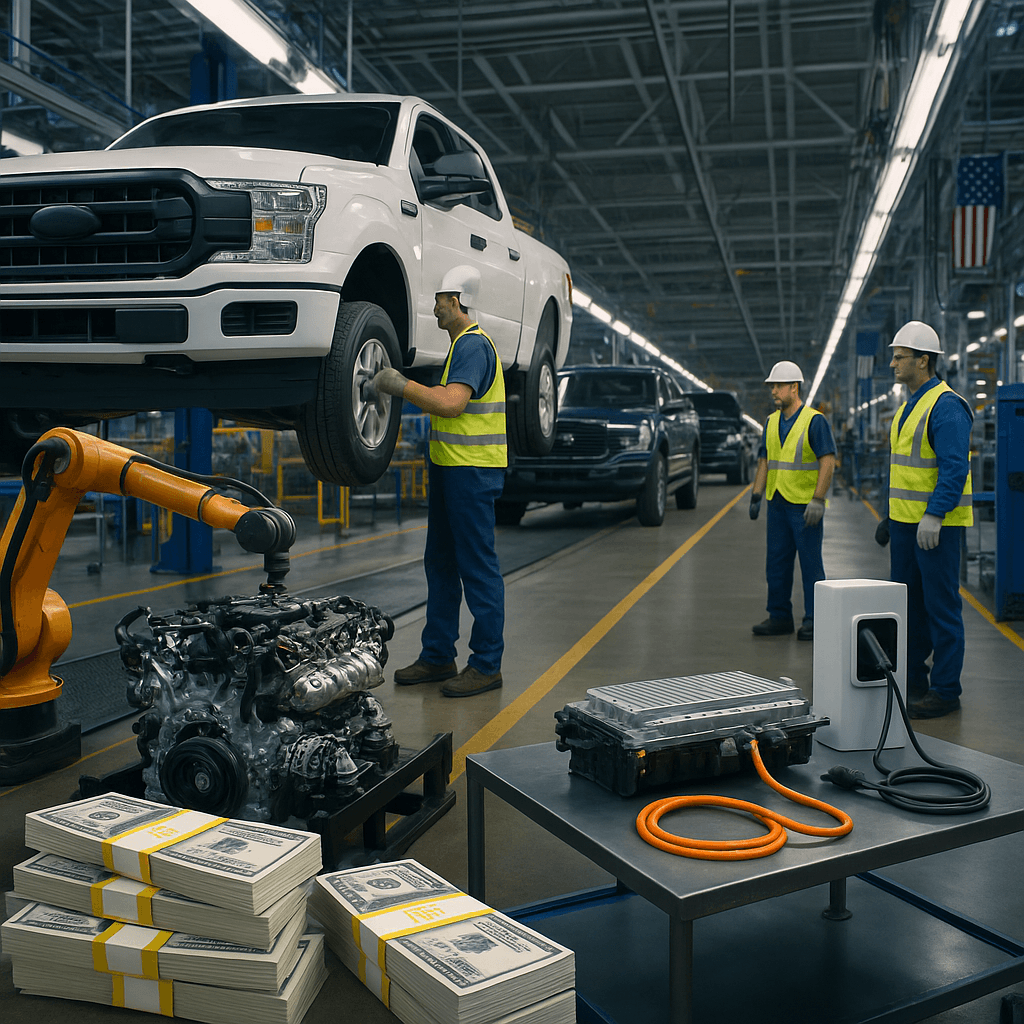Stellantis just threw down $13 billion on a bet that America's not ready to go fully electric. The automaker's massive four-year U.S. manufacturing investment prioritizes gas-powered vehicles and traditional engines over the EV push that's dominated industry headlines. It's a strategic pivot that signals how quickly the electric vehicle narrative is shifting as automakers recalibrate their timelines.
Stellantis is making a massive bet on America's automotive future, and it looks a lot more like the past than anyone expected. The company behind Chrysler, Jeep, and Ram brands announced a $13 billion investment blitz that'll reshape its U.S. manufacturing footprint over the next four years - but electric vehicles are barely part of the equation.
This isn't your typical EV moonshot. Instead, Stellantis is doubling down on what Americans actually buy: gas-powered trucks, SUVs, and crossovers. The investment will create more than 5,000 jobs across factories in Illinois, Ohio, Michigan, and Indiana, with production ramping up through 2029.
The numbers tell the story of an industry reality check. Of five new vehicles planned, only one will be electric - a range-extended hybrid that won't hit Warren Truck Assembly Plant until 2028. The rest? A large gas-powered SUV, a next-generation Dodge Durango, a new midsize truck, and a four-cylinder engine called the GMET4 EVO that screams "internal combustion isn't dead yet."
"Accelerating growth in the U.S. has been a top priority since my first day," CEO and North America COO Antonio Filosa said in a statement. "Success in America is not just good for Stellantis in the U.S. - it makes us stronger everywhere." That success formula apparently involves reading the room on American car buyers' actual preferences versus their stated environmental intentions.
The investment marks a dramatic shift from the EV-heavy playbook that dominated automotive announcements for the past three years. While competitors like Ford and GM poured billions into electric truck plants, Stellantis watched consumer demand fail to materialize at projected levels. Now they're capitalizing on that gap.
The centerpiece of the plan involves reopening the Belvidere Assembly Plant in Illinois, which was shuttered as part of earlier cost-cutting measures. The facility will expand production of the Jeep Cherokee and Jeep Compass specifically for the U.S. market - vehicles that have been imported or produced elsewhere. It's a manufacturing nationalism play that aligns perfectly with current political winds.
Stellantis has been systematically walking back its electrification commitments over the past year. In September, the company and scrapped its . The only electric survivor is the extended-range Ram 1500 REV, which uses a gas generator to extend battery range - hardly a pure EV play.












